-
 Bitcoin
Bitcoin $116300
2.01% -
 Ethereum
Ethereum $3815
5.35% -
 XRP
XRP $3.071
4.46% -
 Tether USDt
Tether USDt $1.000
0.02% -
 BNB
BNB $776.2
1.67% -
 Solana
Solana $173.0
5.70% -
 USDC
USDC $0.9999
0.00% -
 TRON
TRON $0.3389
1.14% -
 Dogecoin
Dogecoin $0.2125
5.92% -
 Cardano
Cardano $0.7627
5.16% -
 Hyperliquid
Hyperliquid $39.00
4.42% -
 Stellar
Stellar $0.4122
5.07% -
 Sui
Sui $3.654
7.22% -
 Chainlink
Chainlink $17.31
5.47% -
 Bitcoin Cash
Bitcoin Cash $582.2
4.28% -
 Hedera
Hedera $0.2521
3.53% -
 Ethena USDe
Ethena USDe $1.001
0.01% -
 Avalanche
Avalanche $22.77
3.47% -
 Litecoin
Litecoin $119.6
2.53% -
 UNUS SED LEO
UNUS SED LEO $8.944
-0.49% -
 Toncoin
Toncoin $3.288
3.95% -
 Shiba Inu
Shiba Inu $0.00001261
3.78% -
 Uniswap
Uniswap $10.12
5.80% -
 Polkadot
Polkadot $3.761
4.23% -
 Dai
Dai $1.000
-0.01% -
 Monero
Monero $285.1
-2.37% -
 Bitget Token
Bitget Token $4.387
1.43% -
 Cronos
Cronos $0.1476
5.88% -
 Pepe
Pepe $0.00001080
4.75% -
 Ethena
Ethena $0.6374
11.58%
Coinbase Staking Investment Guide: From Selection to Income
Coinbase offers a user-friendly platform for staking cryptocurrencies like ETH, ADA, and XTZ, allowing investors to earn passive income with annual rewards of 4-7%.
Jun 05, 2025 at 07:01 am
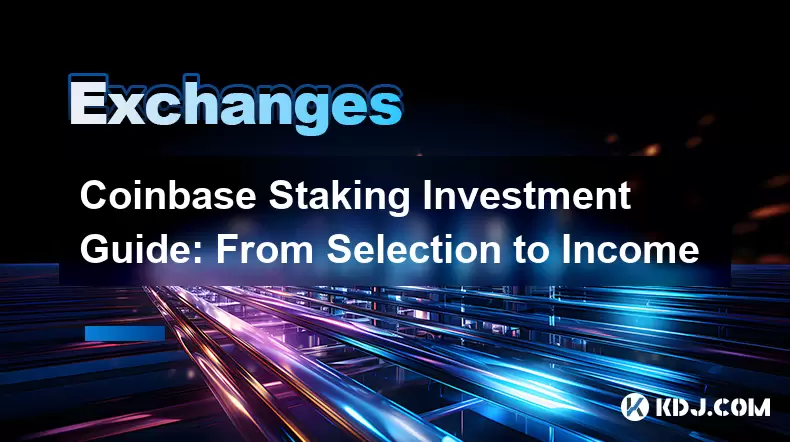
Coinbase Staking Investment Guide: From Selection to Income
Staking cryptocurrencies has become an increasingly popular method for investors to earn passive income. Coinbase, one of the leading cryptocurrency exchanges, offers a user-friendly platform for staking various cryptocurrencies. This guide will walk you through the process of selecting the right cryptocurrencies to stake on Coinbase, understanding the staking process, and maximizing your income from staking.
Understanding Staking on Coinbase
Staking is the process of holding funds in a cryptocurrency wallet to support the operations of a blockchain network. In return, stakers are rewarded with additional cryptocurrency. Coinbase simplifies this process by allowing users to stake their assets directly through their platform.
To begin staking on Coinbase, you need to have a Coinbase account. If you don't have one, you can sign up on their website. Once you're logged in, navigate to the "Earn" section where you can see the available cryptocurrencies for staking.
Selecting the Right Cryptocurrencies for Staking
Choosing the right cryptocurrencies to stake is crucial for maximizing your returns. Coinbase offers staking for several cryptocurrencies, each with its own set of rewards and requirements.
Ethereum (ETH): Ethereum is one of the most popular cryptocurrencies for staking due to its transition to a proof-of-stake consensus mechanism. Staking ETH on Coinbase can yield annual rewards of around 5-7%.
Cardano (ADA): Cardano is another well-known cryptocurrency that can be staked on Coinbase. The staking rewards for ADA are typically around 4-5% annually.
Tezos (XTZ): Tezos offers competitive staking rewards, with annual returns often ranging from 5-6%. Staking XTZ on Coinbase is straightforward and can be a good option for those looking to diversify their staking portfolio.
When selecting a cryptocurrency to stake, consider factors such as the annual percentage yield (APY), the stability of the network, and the ease of staking on Coinbase.
How to Stake Cryptocurrencies on Coinbase
Staking on Coinbase is a straightforward process, but it's important to follow the steps carefully to ensure you're maximizing your rewards.
Navigate to the Earn Section: Log into your Coinbase account and go to the "Earn" section. Here, you'll see a list of cryptocurrencies available for staking.
Select a Cryptocurrency: Choose the cryptocurrency you want to stake from the list. For example, if you want to stake Ethereum, click on the ETH card.
Transfer Funds: If you don't already have the cryptocurrency in your Coinbase wallet, you'll need to purchase it or transfer it from another wallet. Click on "Deposit" and follow the instructions to add funds to your account.
Start Staking: Once your funds are in your Coinbase wallet, click on "Stake" for the chosen cryptocurrency. Coinbase will then lock your funds and begin the staking process. You'll start earning rewards based on the amount staked and the network's performance.
Monitor Your Rewards: You can track your staking rewards in the "Earn" section of your Coinbase account. Rewards are typically distributed on a regular basis, depending on the cryptocurrency.
Maximizing Your Staking Income
To maximize your income from staking on Coinbase, consider the following strategies:
Diversify Your Staking Portfolio: Instead of staking all your funds in one cryptocurrency, consider spreading your investment across multiple assets. This can help you benefit from different reward rates and reduce the risk associated with any single cryptocurrency.
Reinvest Your Rewards: As you earn staking rewards, you can choose to reinvest them back into the same cryptocurrency or diversify into other assets. Reinvesting can compound your returns over time.
Stay Informed About Network Changes: Cryptocurrency networks can undergo changes that affect staking rewards. Stay informed about updates to the networks you're staking on, as these can impact your income.
Consider Staking Periods: Some cryptocurrencies offer higher rewards for longer staking periods. If you're comfortable locking up your funds for an extended period, this could increase your income.
Understanding Staking Rewards and Risks
Staking rewards can vary based on several factors, including the total amount of cryptocurrency staked on the network, the inflation rate of the cryptocurrency, and the specific staking mechanism used by the blockchain.
Rewards: Staking rewards are typically paid out in the same cryptocurrency that you're staking. For example, if you're staking ETH, you'll receive additional ETH as rewards. The amount of rewards you earn depends on the APY and the amount of cryptocurrency you have staked.
Risks: While staking can be a relatively safe way to earn passive income, there are still risks involved. One risk is the volatility of the cryptocurrency market; if the value of the cryptocurrency you're staking drops significantly, it could offset the rewards you earn. Additionally, there's the risk of slashing, where a portion of your staked funds could be lost due to network penalties.
Managing Your Staked Assets
Once you've started staking on Coinbase, it's important to manage your staked assets effectively to ensure you're getting the most out of your investment.
Monitor Your Staking Performance: Regularly check your staking performance in the "Earn" section of your Coinbase account. This will help you stay informed about your rewards and any changes to the staking rewards.
Adjust Your Staking Strategy: Based on your performance and any changes to the network, you may need to adjust your staking strategy. This could involve moving funds between different cryptocurrencies or adjusting the amount you have staked.
Withdraw Your Staked Assets: If you need to access your staked funds, you can withdraw them from the staking pool. Keep in mind that withdrawing your funds may take some time, depending on the cryptocurrency and the network's rules.
Frequently Asked Questions
Q: Can I unstake my cryptocurrencies at any time on Coinbase?
A: The ability to unstake your cryptocurrencies on Coinbase depends on the specific cryptocurrency and the network's rules. Some cryptocurrencies allow you to unstake at any time, while others require you to wait for a certain period. Always check the specific rules for the cryptocurrency you're staking before you begin.
Q: Are there any fees associated with staking on Coinbase?
A: Coinbase may charge fees for staking certain cryptocurrencies. These fees are typically a percentage of the staking rewards you earn. It's important to review the fee structure for each cryptocurrency before you start staking to understand the impact on your returns.
Q: How often are staking rewards distributed on Coinbase?
A: The frequency of staking reward distribution varies by cryptocurrency. Some cryptocurrencies distribute rewards daily, while others may distribute them weekly or monthly. You can check the specific distribution schedule for each cryptocurrency in the "Earn" section of your Coinbase account.
Q: Can I stake multiple cryptocurrencies at the same time on Coinbase?
A: Yes, you can stake multiple cryptocurrencies at the same time on Coinbase. This allows you to diversify your staking portfolio and potentially increase your overall returns. Just make sure you have enough funds in your Coinbase wallet to stake each cryptocurrency you're interested in.
Disclaimer:info@kdj.com
The information provided is not trading advice. kdj.com does not assume any responsibility for any investments made based on the information provided in this article. Cryptocurrencies are highly volatile and it is highly recommended that you invest with caution after thorough research!
If you believe that the content used on this website infringes your copyright, please contact us immediately (info@kdj.com) and we will delete it promptly.
- IREN Overtakes: A New King in the Bitcoin Miner Hashrate Race?
- 2025-08-07 16:31:29
- Memecoins Mania: Whales Eye Pepe Dollar (PEPD) as Bonk Cools Off, While MoonBull Hogs the Spotlight!
- 2025-08-07 16:51:17
- Unilabs, PEPE, and Investment Risk: Navigating the Crypto Hype
- 2025-08-07 16:31:29
- Meme Coin Mania: Rug Pulls, CZ-Inspired Tokens, and the Wild West of Crypto
- 2025-08-07 16:57:14
- HashFlare Founders Face the Music: Jail Time Looms?
- 2025-08-07 14:30:12
- Pepeto's Pounce: Meme Coin Mania Meets Blockchain Infrastructure
- 2025-08-07 15:10:12
Related knowledge

How to deposit USD on Bitstamp
Aug 07,2025 at 05:18pm
Understanding Bitstamp and USD DepositsBitstamp is one of the longest-standing cryptocurrency exchanges in the industry, offering users the ability to...
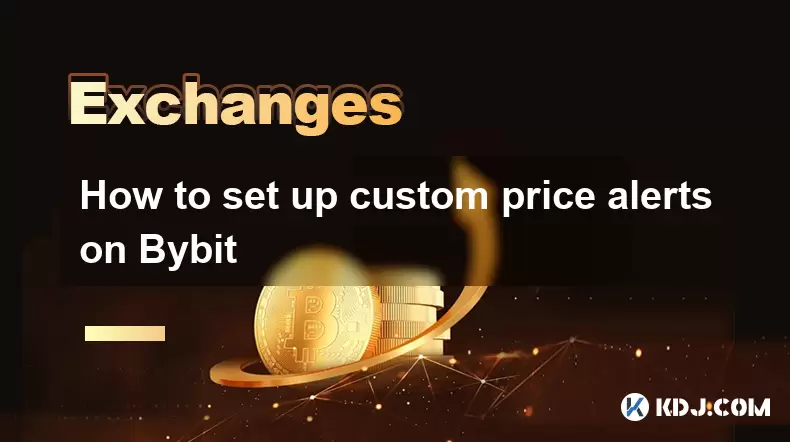
How to set up custom price alerts on Bybit
Aug 07,2025 at 04:31pm
Understanding Price Alerts on BybitPrice alerts on Bybit are essential tools for traders who want to stay informed about significant price movements i...
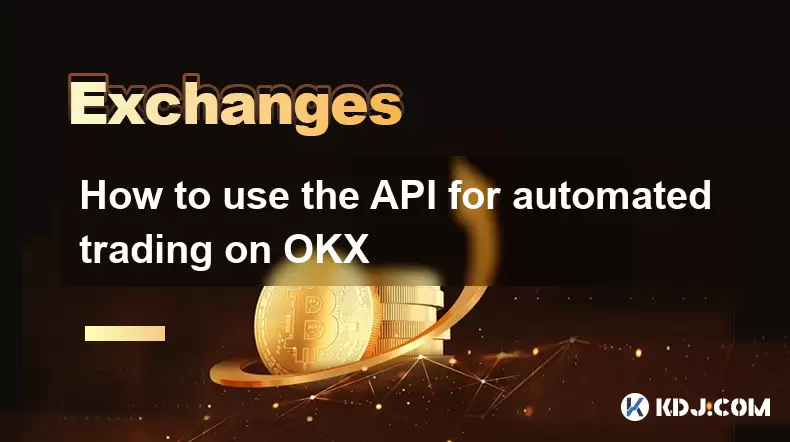
How to use the API for automated trading on OKX
Aug 07,2025 at 05:21pm
Understanding the OKX API for Automated TradingThe OKX API provides a powerful interface for users to automate their trading strategies, access real-t...
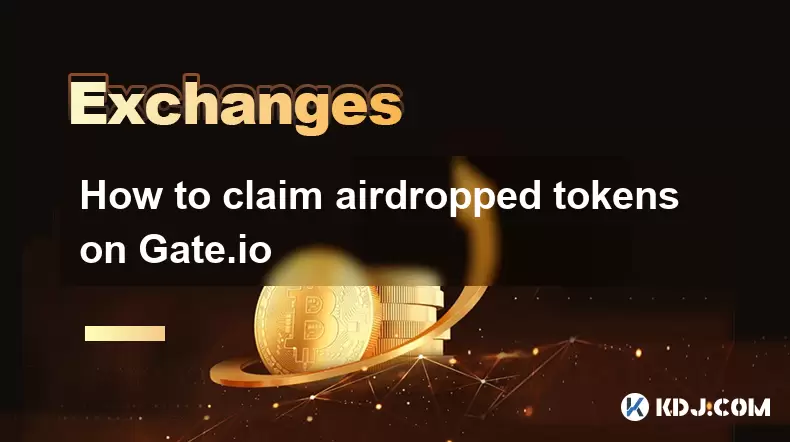
How to claim airdropped tokens on Gate.io
Aug 07,2025 at 04:01pm
Understanding Airdropped Tokens on Gate.ioAirdropped tokens are digital assets distributed for free by blockchain projects to promote awareness, incen...
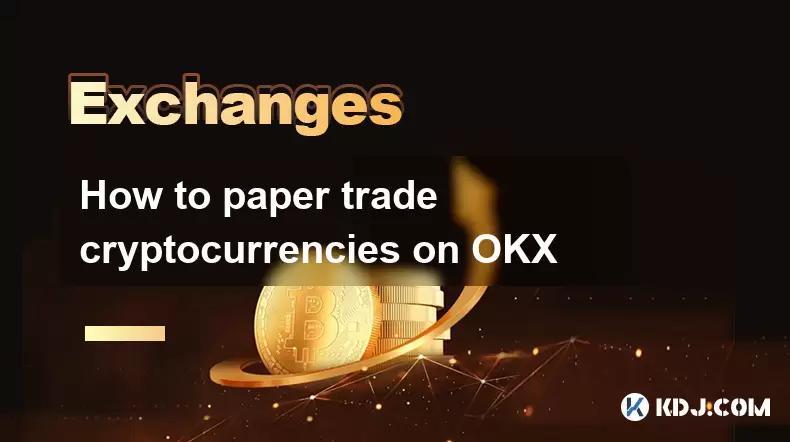
How to paper trade cryptocurrencies on OKX
Aug 07,2025 at 06:01pm
Understanding Paper Trading in the Cryptocurrency ContextPaper trading, also known as simulated or virtual trading, allows users to practice buying an...
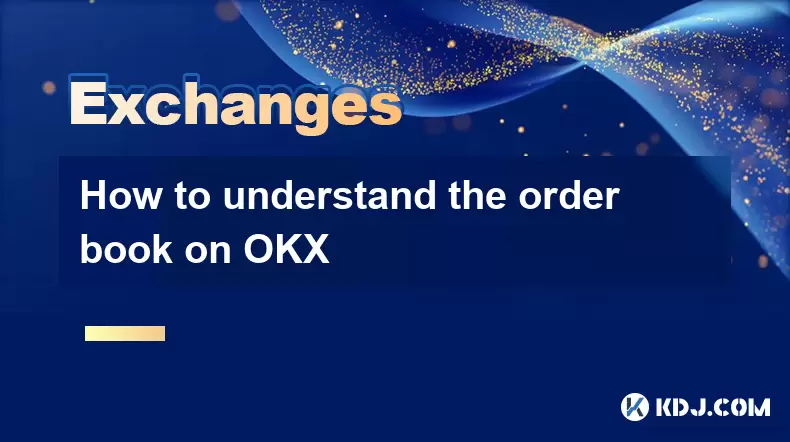
How to understand the order book on OKX
Aug 07,2025 at 03:49pm
What Is an Order Book on OKX?The order book on OKX is a real-time, dynamic list of all open buy and sell orders for a specific cryptocurrency trading ...

How to deposit USD on Bitstamp
Aug 07,2025 at 05:18pm
Understanding Bitstamp and USD DepositsBitstamp is one of the longest-standing cryptocurrency exchanges in the industry, offering users the ability to...

How to set up custom price alerts on Bybit
Aug 07,2025 at 04:31pm
Understanding Price Alerts on BybitPrice alerts on Bybit are essential tools for traders who want to stay informed about significant price movements i...

How to use the API for automated trading on OKX
Aug 07,2025 at 05:21pm
Understanding the OKX API for Automated TradingThe OKX API provides a powerful interface for users to automate their trading strategies, access real-t...

How to claim airdropped tokens on Gate.io
Aug 07,2025 at 04:01pm
Understanding Airdropped Tokens on Gate.ioAirdropped tokens are digital assets distributed for free by blockchain projects to promote awareness, incen...

How to paper trade cryptocurrencies on OKX
Aug 07,2025 at 06:01pm
Understanding Paper Trading in the Cryptocurrency ContextPaper trading, also known as simulated or virtual trading, allows users to practice buying an...

How to understand the order book on OKX
Aug 07,2025 at 03:49pm
What Is an Order Book on OKX?The order book on OKX is a real-time, dynamic list of all open buy and sell orders for a specific cryptocurrency trading ...
See all articles

























































































